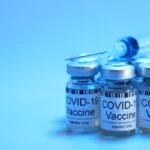Introduction to beef recalls and why they happen
Beef is a staple in many households. It’s juicy, flavorful, and often the centerpiece of our favorite meals. But did you know that beef recall can occur unexpectedly? From contamination to labeling errors, there are several reasons why products might be pulled from store shelves. Understanding these recalls is essential for keeping your family safe.
Imagine preparing a delicious steak dinner only to discover later that the meat was part of a recall due to contamination. The thought alone can be unsettling. As consumers become more aware of food safety issues, it’s crucial to stay informed about what’s happening with the beef we buy.
In this guide, we’ll explore how to protect your loved ones from potential dangers associated with beef recalls and ensure your meals remain safe and enjoyable. Let’s dive into what you need to know!
The dangers of consuming contaminated beef
Contaminated beef poses serious health risks that can affect anyone. Pathogens like E. coli, Salmonella, and Listeria are often the culprits behind outbreaks.
These bacteria can lead to severe foodborne illnesses, causing symptoms such as nausea, vomiting, and abdominal pain. In some cases, complications may arise that require hospitalization.
Children, pregnant women, and the elderly are particularly vulnerable to these dangers. Their immune systems may not be strong enough to fight off infections effectively.
Moreover, consuming contaminated beef can have long-term effects on your health. Some strains of bacteria may result in chronic conditions or even kidney failure in extreme instances.
Being aware of these risks is essential for making informed choices about what you put on your plate. Taking precautions when handling and cooking beef can help protect yourself and your loved ones from potential harm.
Tips for identifying recalled beef products
Beef recalls can happen suddenly, so staying informed is crucial. Check the packaging carefully. Look for establishment numbers and product codes. These details often indicate whether a product is part of a recall.
Stay connected with reliable sources like the USDA or FDA websites. They regularly announce beef recalls and provide updates on affected products.
Use social media wisely; many organizations post real-time information about food safety issues, including beef recalls, which can be very helpful for quick alerts.
When shopping at your local store, keep an eye out for posted notices in meat departments regarding any recent recalls. Staff usually stay updated on current issues and will have relevant information available.
If you’re still unsure about a purchase, don’t hesitate to ask questions at the counter or consult customer service. Your health matters most, so being proactive pays off when it comes to safe eating habits!
Understanding the recall process and what to do if you have a recalled product
When a beef recall occurs, it’s typically communicated through various channels. This could be via news outlets, social media, or direct notifications from retailers. Staying informed is crucial.
If you find that you’ve purchased a recalled product, don’t panic. First, check the packaging for any specific details regarding the recall. Usually, there will be batch numbers and expiration dates listed.
Next, remove the product from your refrigerator or freezer to prevent accidental consumption. You can either return it to the store for a refund or discard it safely.
It’s also recommended to report any symptoms of foodborne illness if you have consumed the recalled beef. Your health should come first. Keep track of what you eat and stay vigilant about recalls; this proactive approach can protect your family in future situations.
Alternative sources for safe and trustworthy beef
When it comes to sourcing safe and trustworthy beef, consider local farms. Many small-scale producers prioritize quality over quantity. By visiting farmers’ markets or community-supported agriculture (CSA) programs, you can connect directly with those who raise cattle ethically.
Another great option is certified organic beef. Organic standards often require stricter regulations regarding animal welfare and feed practices. This means a reduced risk of contamination from antibiotics or hormones.
Grass-fed beef has also gained popularity in recent years. Cattle raised on grass are typically healthier and less likely to carry harmful bacteria compared to grain-fed counterparts.
Don’t overlook online meat suppliers either! Several reputable companies specialize in delivering high-quality, sustainably sourced beef straight to your doorstep. Look for brands that provide transparency about their sourcing methods.
Choosing these alternatives not only supports better food safety but also promotes sustainable farming practices within the community.
Best practices for preventing beef recalls in your own home
To prevent beef recalls in your home, start by being vigilant about where you purchase your meat. Choose reputable suppliers that prioritize food safety. Always check for certifications and quality labels on packaging.
Next, keep a close eye on expiration dates. Freshness matters when it comes to avoiding potential contamination. Rotate your stock so older items get used first.
Proper storage is crucial too. Ensure your refrigerator maintains the right temperature below 40°F (4°C) to inhibit bacterial growth. Use separate cutting boards for raw meat and other foods to avoid cross-contamination.
Stay informed about ongoing beef recalls by subscribing to alerts from the USDA or FDA websites. This keeps you updated on any products that may pose risks.
Educate your family members about safe cooking practices, ensuring ground beef reaches an internal temperature of at least 160°F (71°C).
The Dangers of Contaminated Beef
Contaminated beef poses serious health risks. Bacteria such as E. coli, Salmonella, and Listeria can thrive in improperly handled meat. Consuming these pathogens can lead to severe gastrointestinal issues, including vomiting and diarrhea.
Children, the elderly, and those with weakened immune systems are particularly vulnerable. For them, a simple meal could escalate into a medical emergency.
Additionally, some contaminants might not cause immediate symptoms but can result in long-term health problems. In rare cases, infections from contaminated beef can even be life-threatening.
Cross-contamination is another concern when handling raw meat. Cooking surfaces that come into contact with raw beef need thorough cleaning to prevent spreading harmful bacteria to other foods.
Being aware of these dangers emphasizes the importance of staying informed about recalls and practicing safe food handling at home. Protecting your family starts before dinner preparation begins; it’s about making educated choices every step of the way.
Steps to Protect Your Family
Staying informed is key. Regularly check the USDA Food Safety and Inspection Service website for updates on beef recalls. Sign up for alerts to receive timely notifications about any safety concerns.
When shopping, examine packaging carefully. Look for recall notices or specific lot numbers associated with recent warnings. Familiarize yourself with brands that have had issues in the past; this knowledge could save you from a potential hazard.
Proper storage matters too. Always refrigerate or freeze beef promptly after purchase to minimize bacterial growth. Use separate cutting boards for raw meat to avoid cross-contamination with other foods.
Teach your family about safe cooking temperatures as well. Ground beef should reach an internal temperature of 160°F, while steaks and roasts require at least 145°F followed by resting time.
Encouraging good hygiene practices can significantly reduce risks, so make handwashing before meal prep a household routine.
Understanding Food Safety Labels and Certifications
Food safety labels and certifications can be confusing, but they are essential for informed choices. Familiarizing yourself with these markings can significantly enhance your family’s safety.
Look for USDA inspections, which indicate that a product meets federal standards. This label assures you that the beef has been examined for quality.
Certifications such as “grass-fed” or “organic” suggest specific farming practices. While not always linked to recalls, they often reflect higher standards of care in production.
Additionally, check for third-party certifications like Safe Quality Food (SQF) or Global Food Safety Initiative (GFSI). These programs undergo rigorous audits to ensure compliance with strict food safety regulations.
Reading labels carefully helps in identifying trustworthy products. Always make it a habit; it makes a difference in protecting your loved ones from potential harm caused by contaminated beef.
Alternatives to Beef: Plant-based Proteins
As beef recalls become a concern, many families are exploring alternatives to traditional meat. Plant-based proteins have surged in popularity for good reasons.
Options like lentils, chickpeas, and quinoa offer excellent protein sources without the risks associated with meat. They’re versatile and can be incorporated into various recipes—from hearty stews to refreshing salads.
Tofu and tempeh also serve as fantastic substitutes. They absorb flavors well and provide a satisfying texture that can appeal to even the most devoted carnivores.
Don’t overlook nuts and seeds either! These not only add crunch but also pack a nutrient punch, enriching meals with healthy fats.
Experimenting with plant-based ingredients opens up exciting culinary possibilities while keeping your family safe from potential beef-related health issues. Embracing these options could lead you on a delicious journey toward healthier eating habits.
Conclusion
Beef recalls are a serious issue that affects many families. Understanding the risks associated with contaminated beef is crucial for your family’s safety. By staying informed and vigilant, you can significantly reduce the chances of consuming unsafe products.
The dangers posed by contaminated beef cannot be understated. Illnesses such as E.
Coli and Salmonella can arise from eating tainted meat, leading to severe health complications. Awareness of these risks is the first step in protecting your loved ones.
Identifying recalled products involves regularly checking updates from reliable sources like the USDA or FDA websites. Look out for specific identifiers such as brand names, lot numbers, and sell-by dates when purchasing meat at stores.
If you do find yourself with a product that has been recalled, knowing what actions to take will help mitigate any potential harm. Follow guidance from food safety authorities regarding disposal or return procedures.
Exploring alternative sources for safe beef can provide peace of mind. Consider local farms or trusted suppliers who prioritize animal welfare and quality control measures in their production processes.
To prevent recalls at home, practice best practices in food handling and storage. Always ensure proper cooking temperatures and avoid cross-contamination while preparing meals.
Understanding food safety labels will empower you during shopping trips too; certifications like USDA Organic or Grass-Fed indicate higher standards of care throughout processing stages.
For those looking to diversify protein intake without relying solely on beef, plant-based alternatives are widely available now more than ever—offering versatile options packed with nutrients suitable for every diet.
Staying proactive about food choices ensures you keep your family healthy amid uncertainties surrounding beef recalls..


